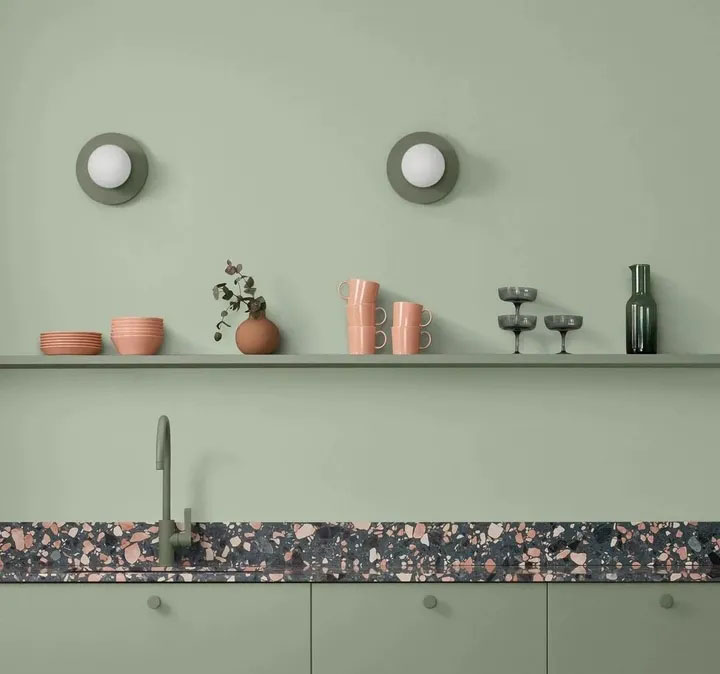Terrazzo, a material with ancient origins, has experienced a renaissance in modern design, evolving from its traditional roots to embrace contemporary aesthetics and innovative applications. Modern terrazzo embodies a perfect blend of tradition and innovation, offering a versatile and visually captivating material that resonates with today’s design sensibilities. Let’s delve into the characteristics, benefits, and applications that define modern terrazzo as a design staple.
Sleek and Sophisticated Aesthetics
Modern terrazzo embraces sleek and sophisticated aesthetics, characterized by refined color palettes, subtle patterns, and minimalist designs. While traditional terrazzo often featured bold and intricate patterns, modern interpretations lean towards understated elegance, focusing on clean lines and harmonious compositions. This contemporary approach to terrazzo design aligns seamlessly with modern interior trends, creating spaces that feel both timeless and of-the-moment.
Diverse Material Combinations
Innovations in material technology have expanded the possibilities for modern terrazzo, allowing for a diverse range of material combinations beyond traditional aggregates. From recycled glass and metal fragments to innovative resins and polymers, modern terrazzo incorporates a myriad of materials that contribute to its unique texture, depth, and visual appeal. These innovative material combinations offer designers unparalleled flexibility and creative freedom, resulting in terrazzo designs that are truly one-of-a-kind.
Sustainable and Eco-Friendly Solutions
Modern terrazzo places a strong emphasis on sustainability and environmental responsibility. By incorporating recycled materials and utilizing eco-friendly manufacturing processes, modern terrazzo offers a greener alternative to traditional flooring and surfacing materials. This commitment to sustainability not only reduces the environmental impact but also aligns with the growing demand for responsible and eco-conscious design solutions.
Versatile Applications in Contemporary Design
The versatility of modern terrazzo extends to its applications in contemporary design. Beyond traditional flooring and countertops, modern terrazzo is being used in innovative ways, such as wall cladding, furniture, and decorative accents. Its adaptability to various design elements allows for seamless integration into diverse architectural settings, from residential spaces and commercial interiors to public installations and outdoor environments.
Technological Advancements and Customization
Advancements in technology have revolutionized the production and customization of modern terrazzo. Digital printing techniques, CNC machining, and 3D modeling enable designers to create intricate patterns, bespoke designs, and personalized terrazzo solutions that were previously unattainable. These technological advancements open up new avenues for creativity and allow modern terrazzo to push the boundaries of design innovation.
Conclusion
Modern terrazzo represents the evolution of a timeless material into a contemporary design medium, offering a perfect balance of tradition, innovation, and sustainability. Its sleek aesthetics, diverse material combinations, and versatile applications make it a preferred choice among designers and architects seeking to create spaces that are both visually striking and environmentally responsible. As modern terrazzo continues to redefine boundaries and inspire new design possibilities, it reaffirms its status as a design classic that transcends trends and stands the test of time.










